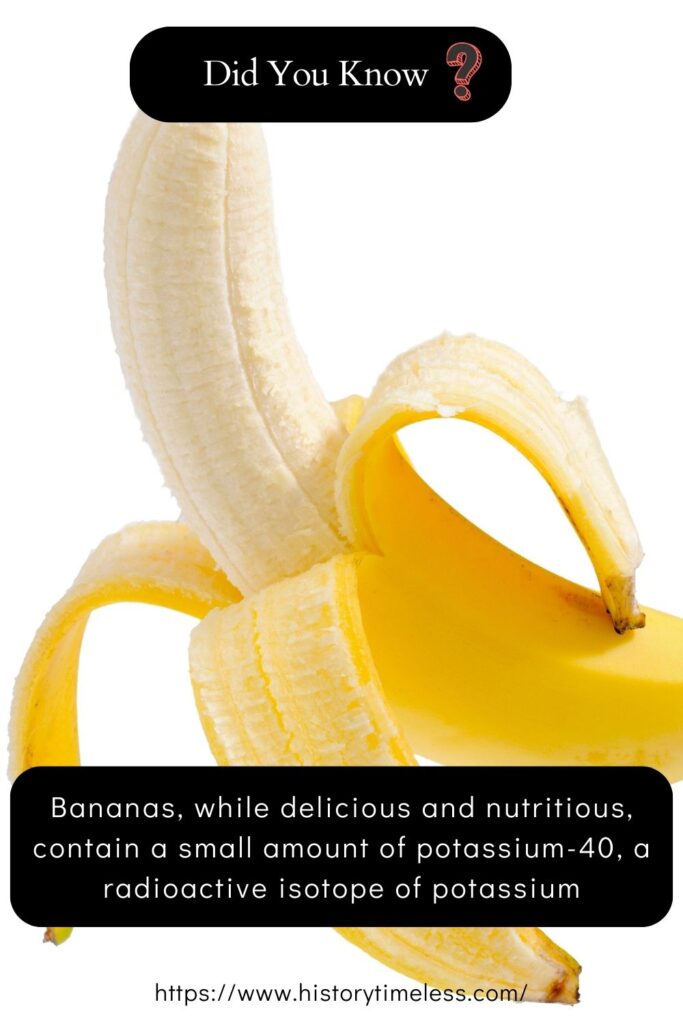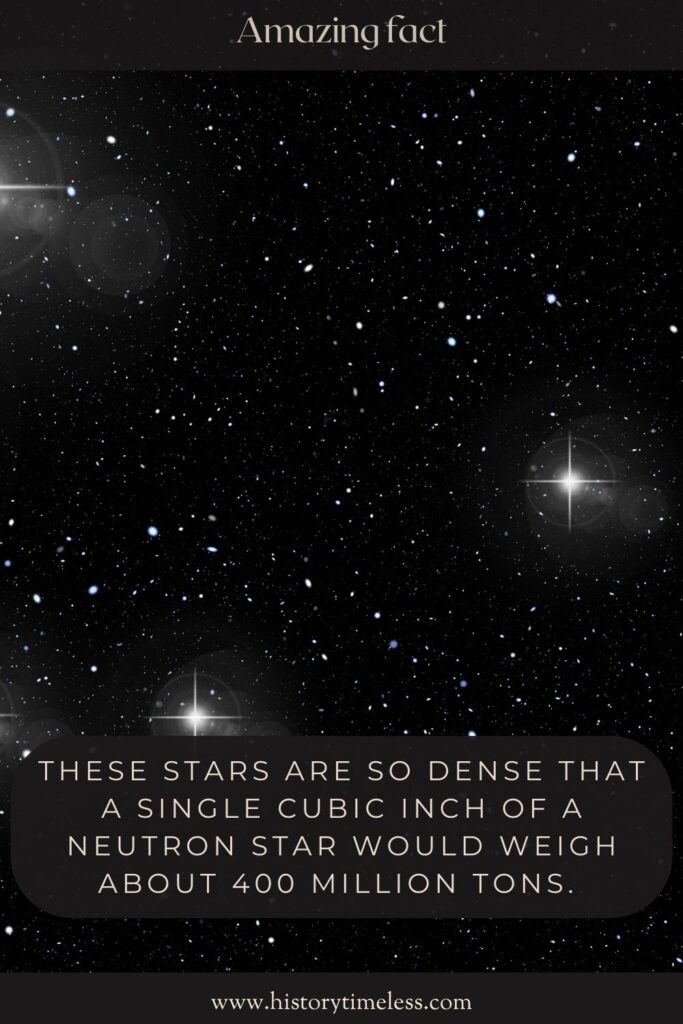Science has always been full of wonder and discovery, with facts that challenge our understanding of the world. From the mysteries of outer space to the fascinating details of everyday life, science is brimming with incredible revelations.
In this blog post, we’ll dive into 10 amazing science facts that are as mind-blowing as they are interesting.
Whether you’re a science enthusiast or just curious about the world around you, these facts are sure to spark your interest and broaden your perspective.
1. The Human Body Contains Enough DNA to Stretch to the Sun and Back
Each of us carries about 37.2 trillion cells, and within each cell, there’s DNA. If you could stretch all the DNA in your body, it would span roughly 10 billion miles, enough to reach the Sun and back over 200 times!
DNA is incredibly compact, coiled tightly in each cell, allowing all this genetic information to fit inside your body. This fact highlights the complexity and efficiency of the biological systems that make us who we are.
2. Bananas Are Radioactive (But Don’t Worry!)
Bananas, while delicious and nutritious, contain a small amount of potassium-40, a radioactive isotope of potassium. This is perfectly natural and not harmful to us in the small amounts found in bananas.

In fact, the radioactivity of bananas has led to the creation of the “banana equivalent dose,” a unit of radiation measurement.
Although the radiation is minuscule, it’s an interesting fact that shows how even the most familiar foods can have surprising properties.
3. Water Can Boil and Freeze at the Same Time
This phenomenon, known as the “triple point,” occurs when a substance is at a specific temperature and pressure where it can exist in all three phases: solid, liquid, and gas.
Under these conditions, water can simultaneously freeze, boil, and remain liquid. The triple point happens at a very precise pressure and temperature (0.01°C and 611.657 pascals), and it showcases the fascinating interplay of physical states.
4. Octopuses Have Three Hearts and Blue Blood
Octopuses are remarkable creatures with some extraordinary biological features. They have three hearts: two pump blood to the gills, while the third pumps it to the rest of the body.
Their blood is blue, thanks to a copper-based molecule called hemocyanin, which is more efficient than iron-based hemoglobin in cold, low-oxygen environments. This unique anatomy helps octopuses thrive in the deep ocean.
5. Venus Has Days Longer Than Its Years
Venus is a planet that takes 243 Earth days to complete a full rotation, making its day longer than its year, which is only 225 Earth days. It also rotates in the opposite direction to most planets, so on Venus, the Sun rises in the west and sets in the east.
These unique characteristics make Venus one of the most fascinating and mysterious planets in our solar system.
6. The Eiffel Tower Can Grow Taller in the Summer
The Eiffel Tower is made of iron, and like all metals, it expands when heated. During the summer, the temperature in Paris can reach over 35°C, causing the metal to expand slightly.
As a result, the Eiffel Tower can grow up to 6 inches taller during hot weather. This expansion is an amazing example of how temperature affects materials on both large and small scales.
7. A Single Spoonful of Honey Represents the Life Work of 12 Bees
Honeybees are incredible workers. To make just one spoonful of honey, around 12 bees will dedicate their lives to collecting nectar from about 2,000 flowers.
Each bee gathers nectar, converts it into honey through a series of processes, and deposits it in the hive. The whole process showcases their teamwork and the importance of bees in our ecosystems.
8. Sharks Have Been Around Longer Than Trees
Sharks have been roaming the oceans for around 400 million years, which is about 50 million years longer than trees have existed on Earth.
These ancient creatures have survived multiple mass extinctions and evolved into the diverse species we know today. Their long history on Earth makes them a fascinating study in survival and adaptation.
9. Humans Share 60% of Their DNA with Bananas
It’s hard to believe, but humans share about 60% of their DNA with bananas. This surprising similarity highlights the commonalities of life on Earth and the shared evolutionary paths that have led to diverse forms of life.
While we obviously look very different from bananas, at the genetic level, we have many similar building blocks that form the foundation of all living organisms.
10. The Earth Is Not a Perfect Sphere
Although we often think of Earth as a perfect sphere, it’s actually an “oblate spheroid,” meaning it’s slightly flattened at the poles and bulging at the equator.
This is due to the planet’s rotation, which causes the equatorial region to stretch outward. This fact is a great reminder that even our home planet has its quirks and is constantly in motion, shaped by forces we may not even see.
11. The Shortest War in History Lasted Only 38 to 45 Minutes
The Anglo-Zanzibar War, fought between the United Kingdom and the Sultanate of Zanzibar on August 27, 1896, holds the record for the shortest war in history.
The conflict lasted between 38 and 45 minutes, resulting in a quick and decisive victory for the British. The war’s brevity is a remarkable reminder of how quickly events in history can unfold when power dynamics are involved.
12. Humans Have More Bacteria in Their Bodies Than Human Cells
It’s surprising, but the number of bacteria cells in and on our bodies outnumbers our human cells by a factor of about 10.
While this might sound alarming, most of these bacteria are harmless or even beneficial, aiding in digestion, immune function, and protecting against harmful microorganisms. Our bodies are a vast ecosystem of bacteria, and they play a crucial role in our health.
13. You Can Fit All the Planets in the Solar System Between Earth and the Moon
The distance between Earth and the Moon is about 238,855 miles (384,400 kilometers). If you were to line up all the planets in our solar system, from Mercury to Neptune, they would only take up about 93 million miles in total—roughly the distance from Earth to the Sun.
This highlights just how vast space is and how small our planetary system can appear when considering the distances involved.
14. Tardigrades Can Survive in Space
Tardigrades, also known as water bears, are microscopic creatures that are nearly indestructible. They can survive extreme conditions, including intense heat, radiation, freezing temperatures, and even the vacuum of space.
In 2007, scientists sent tardigrades into space, where they endured harsh conditions and even survived. This remarkable resilience makes tardigrades one of the most durable life forms on Earth.
15. Some Animals Can Regrow Limbs
Certain species of animals, such as axolotls, starfish, and some lizards, possess the ability to regrow lost limbs or even entire organs. This ability is a result of their regenerative cells that can replace damaged tissues with new ones.
While humans don’t have this remarkable ability, studying these creatures may one day offer insights into regenerative medicine.
16. Your Stomach Gets a New Lining Every Few Days
Your stomach is constantly working to break down food, but the acid it produces can also damage its lining. To prevent this, your stomach replaces its lining every 3 to 5 days.
The new lining is made up of cells that rapidly regenerate, which allows your stomach to continue performing its important task without being harmed by the harsh environment inside.
17. Lightning Strikes Earth 100 Times Every Second
Lightning is one of nature’s most powerful forces. On Earth, lightning strikes occur about 100 times every second. That’s more than 8 million lightning strikes per day!
These strikes can be dangerous, but they also help in the nitrogen cycle by turning atmospheric nitrogen into a form that plants can use for growth.
18. Honey Never Spoils
Archaeologists have discovered pots of honey in ancient Egyptian tombs that are over 3,000 years old and still perfectly edible.
Honey has natural preservatives, including low moisture content and antimicrobial properties, which prevent bacteria and fungi from growing. This makes honey one of the longest-lasting natural foods on Earth.
19. Neutron Stars Are Incredibly Dense
Neutron stars are the remnants of massive stars that have exploded in a supernova. These stars are so dense that a single cubic inch of a neutron star would weigh about 400 million tons.

Neutron stars are the densest objects in the universe, second only to black holes. They also have extremely strong magnetic fields, and some even emit beams of radiation known as pulsars.
20. There Are More Stars in the Universe Than Grains of Sand on All Earth’s Beaches
It’s estimated that there are about 100 billion galaxies in the observable universe, each with millions or even billions of stars. The total number of stars is so vast that it’s thought to outnumber the grains of sand on every beach on Earth.
This mind-boggling fact emphasizes the sheer scale of the universe and the number of celestial bodies that exist beyond our planet.
21. Your brain generates enough electricity to power a light bulb
Your brain produces about 20 watts of electricity—enough to light up a small bulb! This energy comes from billions of neurons firing electrical signals every second.
Even when you’re asleep, your brain remains highly active, processing information and keeping vital functions running.
This explains why thinking hard can feel exhausting—your brain is consuming energy just like a computer processor!
22. Water can boil and freeze at the same time
It sounds impossible, but this phenomenon, called the “triple point,” occurs when temperature and pressure are just right for water to exist as a solid, liquid, and gas simultaneously.
This happens at exactly 0.01°C (32.018°F) and a pressure of 611.657 pascals. Scientists use this principle to define temperature standards.
If you ever see an experiment demonstrating this, it looks surreal—boiling and freezing at the same time! It’s a mind-blowing reminder that physics is full of strange surprises.
23. Your bones are as strong as steel
Pound for pound, human bones are as strong as steel! A cubic inch of bone can theoretically bear the weight of over 19,000 pounds—roughly the weight of five pickup trucks.
This incredible strength comes from bone’s unique composite structure, made of collagen (which provides flexibility) and minerals like calcium phosphate (which provides strength).
Despite their strength, bones remain lightweight, allowing humans to move efficiently. This is why astronauts lose bone density in space—without gravity, bones don’t need to support as much weight, so they weaken over time.
24. There’s a planet where it rains molten glass sideways
Exoplanet HD 189733b, located 64 light-years away, has some of the most extreme weather in the universe. Its winds blow at speeds of up to 5,400 mph (8,700 km/h), and it rains molten glass—sideways!
The planet’s blue color might make it look inviting, but in reality, it’s a nightmarish world where violent storms constantly rage.
Scientists study such exoplanets to understand how planets form and what conditions are needed for life to exist. As terrifying as it sounds, HD 189733b is a fascinating reminder of the diversity of planets in the universe.
25. Sharks Can Detect Electrical Fields of Other Living Beings
Sharks are renowned predators, and their senses are incredibly finely tuned for hunting. Beyond their keen sense of smell and sight, sharks possess a remarkable ability called electroreception.
They have specialized sensory organs called ampullae of Lorenzini, which are gel-filled pores concentrated around their head.
These organs can detect the faint electrical fields generated by the muscle contractions of other living creatures, even if they are hidden in the sand or murky water. This “sixth sense” allows sharks to pinpoint prey with incredible accuracy in low visibility conditions.
Revel in these engaging factoids:
25 Fascinating O-Negative Blood Type Facts You Didn’t Know!
25 Shocking Rh-Negative Blood Facts You Need to See!
20+ Insane Facts About Animals That Defy Belief!
15+ Interesting World Facts: Say ‘Wow’ to These Discoveries!





